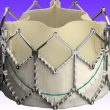This study compared fractional flow reserve (FFR) vs. angiography to guide the angioplasty of non-culprit vessels in patients with acute coronary syndrome (ACS) and multivessel disease. Landmark studies such as COMPLETE, COMPARE-ACUTE and DANAMI-3-PRIMULTI have demonstrated the prognostic value of revascularization (after treatment of the artery responsible for the ACS) of non-culprit arteries with respect...
Intervention in Patients with Takayasu Arteritis: Rescue Therapy or an Alternative Complementary to Immunosuppressive Therapy?
Takayasu arteritis (TAK) is an uncommon granulomatous large-vessel vasculitis that affects the aorta and its primary branches. The most frequently types of observed vascular compromise are obstructive lesions, and aneurysmal vascular lesions or dissections. In 2021, the American College of Rheumatology recommended not to implement percutaneous intervention (PI) with these patients and only use immunosuppressive...
Combined Calcified Lesion Preparation Strategy
Stent sub-expansion in coronary territory has been identified as one of the major predictors of stent failure at followup, which is why improving stent expansion will improve clinical and imaging outcomes. In percutaneous coronary interventions (PCI) of severely calcified lesions, calcified lesions present a major challenge since they impede stent delivery, causing stent under-expansion or...
Valve-in-Valve Shows Good Evolution after 2 Years
The degeneration of bioprostheses in aortic position occurs at approximately after 10 to 15 years. In this scenario, the treatment of choice used to be redo surgery, but with the evolution of transcatheter aortic valve replacement (TAVR), it became a valid alternative with a level IIa B evidence. While there are currently multiple analyses of...
IVUS Use in Peripheral Vascular Disease: Should this Tool Be Used More Frequently in Peripheral Interventions?
Use of intravascular ultrasound (IVUS) has increased rapidly, and several randomized and observational studies have shown improved results in patients who underwent coronary angioplasty using this tool. However, evidence on IVUS on peripheral interventions is more limited. Observational studies have found similar benefits when IVUS was part of the revascularization strategy. In a meta-analysis of...
Long-Term Mortality in Non-Obstructive Lesions in the Left Main Coronary Artery
Left main coronary artery (LMCA) intervention with significant lesions on both coronary angiography and intravascular ultrasound (IVUS), either through angioplasty (PCI) or myocardial revascularization surgery (MRS), is directly related to a decrease in long-term adverse clinical events. However, the relationship between subclinical LMCA disease (preserved luminal diameters) and long-term mortality is still unknown. A retrospective...
BEST-CLI: Revascularization of Critical Lower Limb Ischemia, a Pragmatic Study
Critical lower limb ischemia (CLLI) is associated with a major deterioration in quality of life and a significant increase in morbidity and mortality. Its estimated annual incidence is 220 to 3500 cases per million people, with an expected prevalence of 11% of patients with peripheral arterial disease. CLLI is the “terminal” stage of peripheral artery...
Results of the COMPARE Study After 2 Years: Low Dose vs. High Dose Paclitaxel-Coated Balloons
The development of new devices and techniques has expanded the range of patients who benefit from endovascular treatment of femoropopliteal lesions. Paclitaxel-eluting devices have improved clinical results and treated-vessel patency at follow-up compared with conventional angioplasty. Currently, devices with different doses of paclitaxel are available in the market. The COMPARE (Compare I Pilot Study for...
Heparin Pretreatment in STEACS Treatment: A New Old Ally?
The treatment of ST-segment elevation acute coronary syndromes (STEACS) is undoubtedly reperfusion therapy with primary percutaneous coronary intervention. Similarly, nobody doubts that the pretreatment with more stronger antiplatelet agents has a role in such a treatment. In certain sites, unfractionated heparin (UFH) pretreatment is also administered before the patient enters the cath lab; its aim...
Are FFR and IVUS Similar to Assess Intermediate Lesions?
In coronary artery disease (CAD), lumen area and plaque burden, characteristics and physiological impact are what define prognosis. At present, coronary angiography continues to be the gold standard for CAD assessment. When considering PCI to treat intermediate lesions, FFR has been shown beneficial and safe. Not yet IVUS. 1682 patients with intermediate lesions (40 –...









